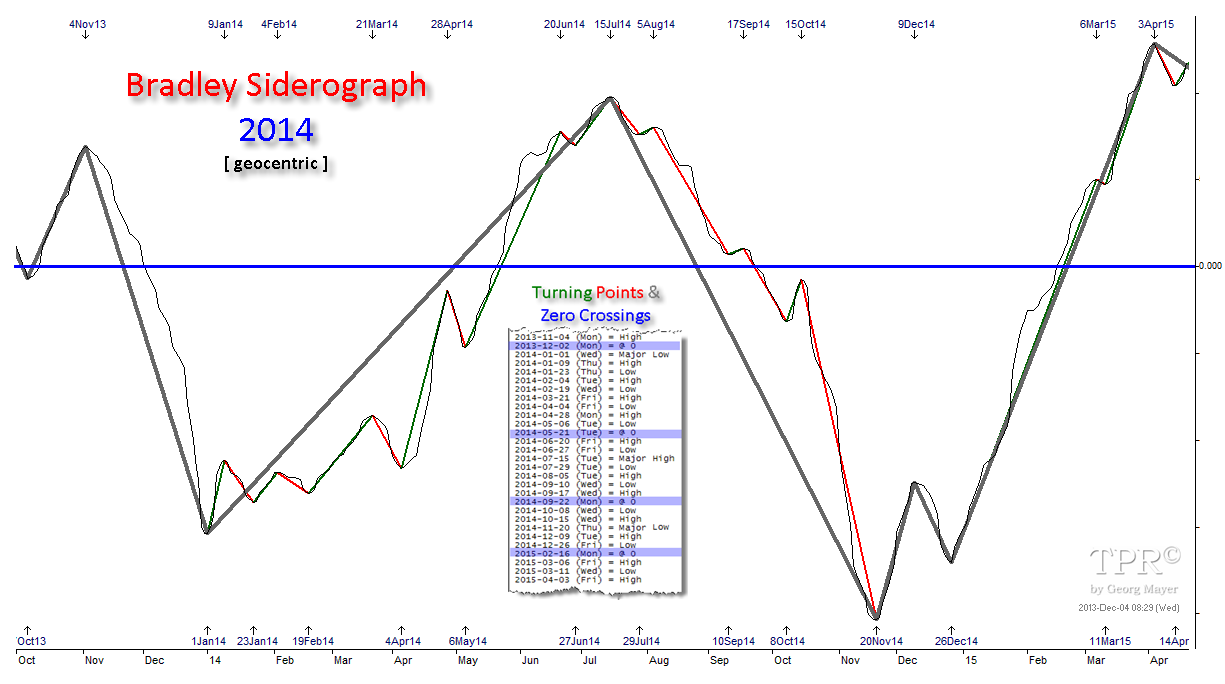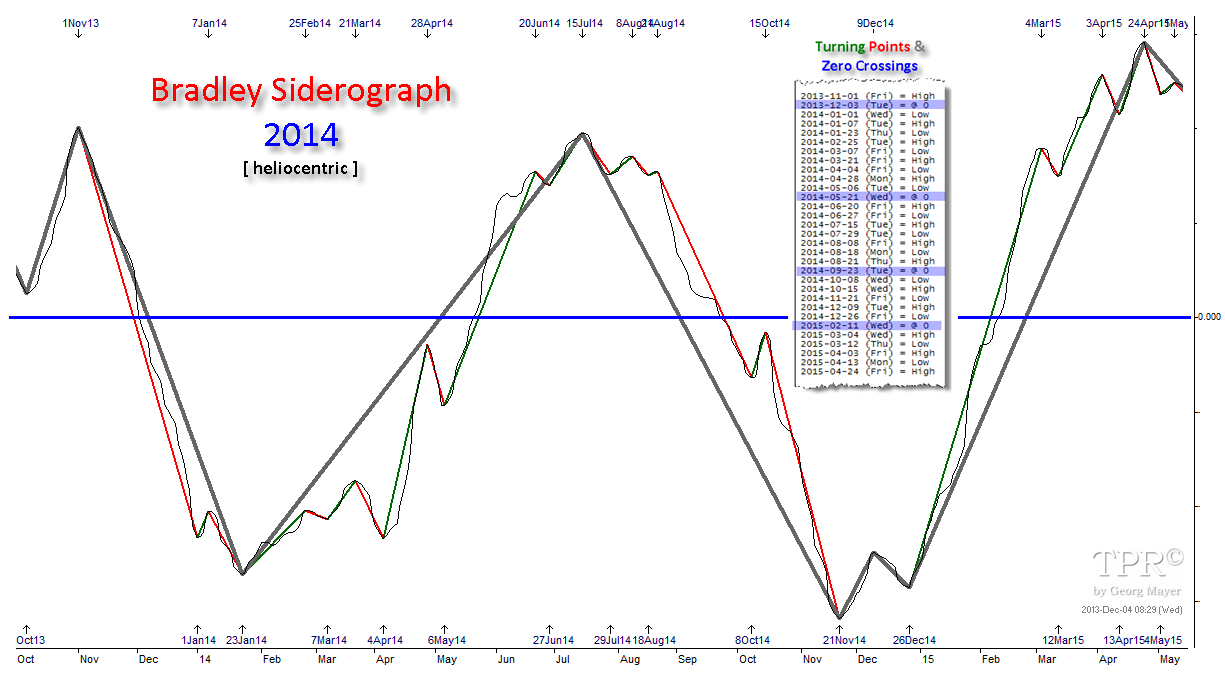The Bradley siderograph was developed in the 1940s by Donald Bradley to forecast the stock markets using the movement of the planets. Bradley believed that the natural forces of the planetary cycles were the causation that affected the tides of men and there emotions. Bradley assigned over 190 numerical values to specific planetary constellations for every day, and the made a composite summation that became the siderograph, or Bradley timing model. It was originally intended to predict the stock markets. The noted technical analyst William Eng singled out the Bradley as the only ‘excellent’ Timing Indicator in his book, “Technical Analysis of Stocks, Options, and Futures“.
It is crucial to understand what the Bradley timing model is actually telling us since almost all traders (and even financial astrologers!) often misunderstand it. Over the decades it has been observed that the siderograph can NOT (!!!) reliably predict the DIRECTION of the market but only turning points (Major Trend Reversals) in the financial markets (stocks, bonds, bonds, commodities) within a time window of +/- 7 calendar days. Inversions (i.e. a high instead of a low and vice versa) are quite common especially during periods of Planetary Retrograde. The siderograph can be computed in a Geocentric or Heliocentric aspects. My personal experience is that the Heliocentric model often is more accurate but when they both are in sync the effects are quite a bit more powerful.
Check out each of the Bradley timing model charts below (note that both charts below are from Time-Price-Research, a great resource for astrofin research). In short, I am looking for a large scale stock, bond and commodity index reversal around July 15.
Bradley Model – Geocentric
Bradley Model – Heliocentric
Any opinions expressed herein are solely those of the author, and do not in any way represent the views or opinions of any other person or entity.










